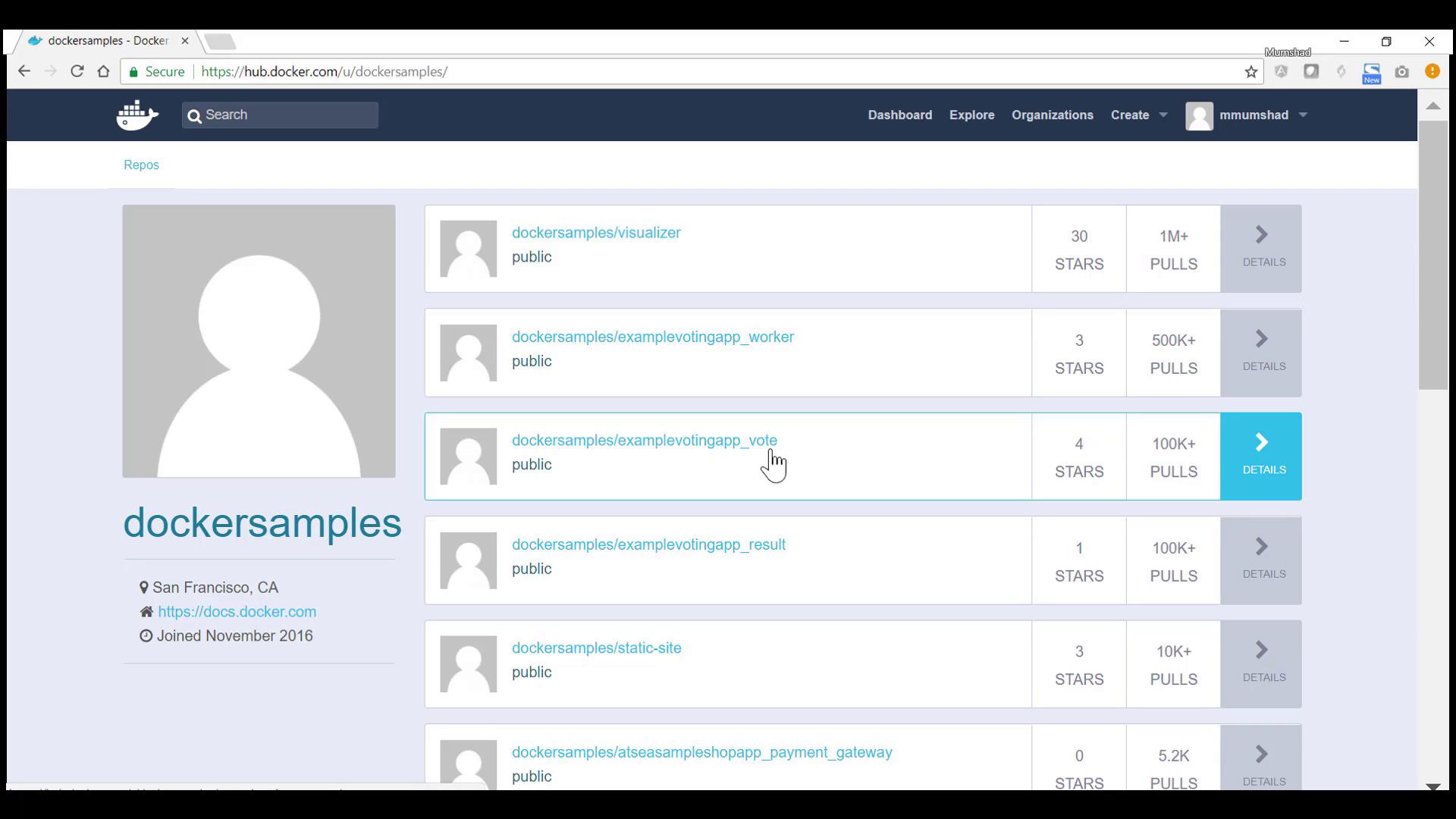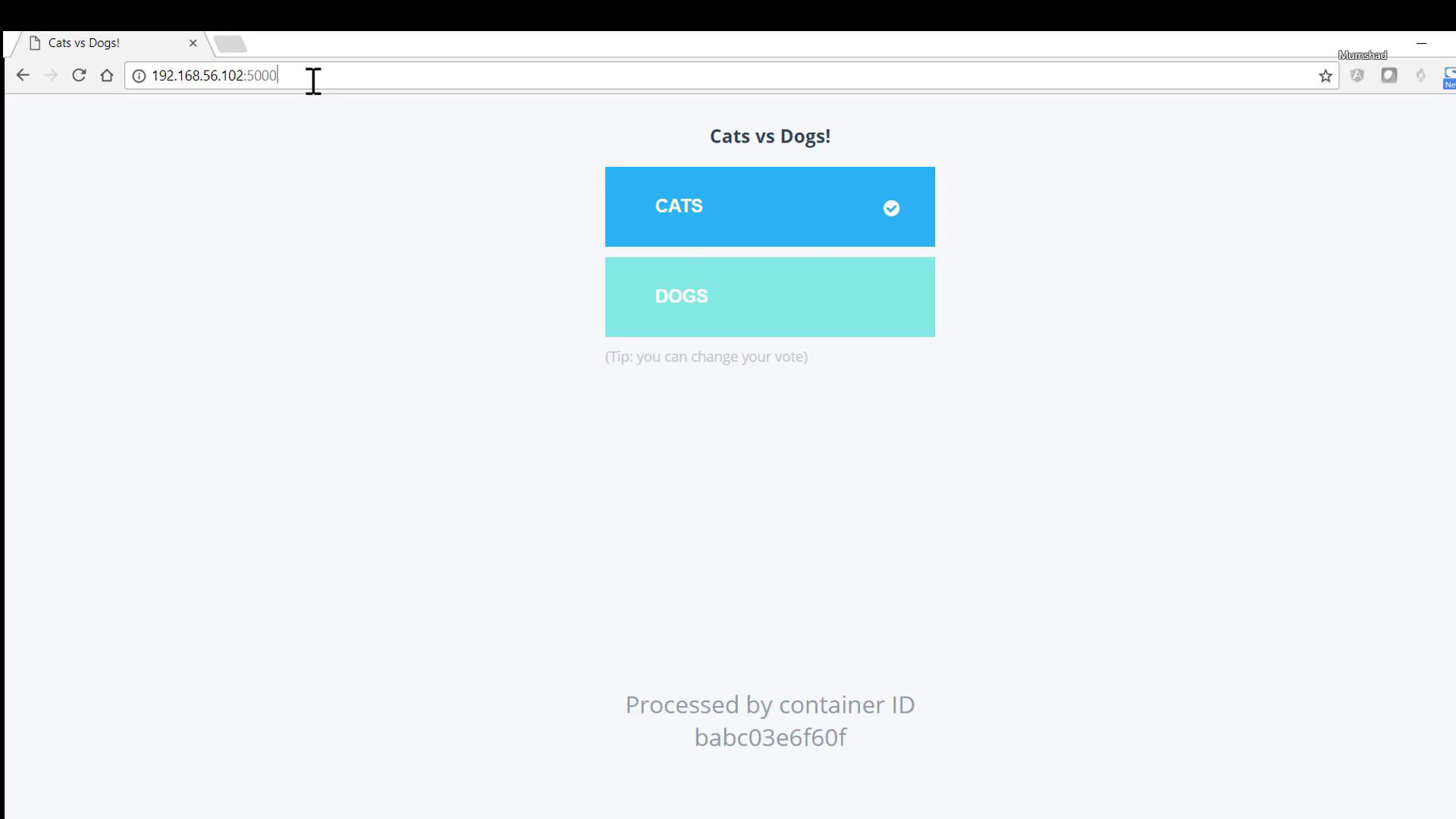Docker Certified Associate Exam Course
Docker Swarm
Demo Docker Stack
In this lesson, we'll deploy the Example Voting App using Docker Stacks on a Swarm cluster. We start by upgrading our Compose file to version 3, deploy it as a stack, verify running services, and then scale the voting service.
1. Prepare the Docker Compose File (Version 3)
Below is the upgraded Compose file in version 3 format. Save this as docker-stack.yml on your Swarm manager:
version: '3'
services:
redis:
image: redis
db:
image: postgres:9.4
vote:
image: dockersamples/examplevotingapp_vote
ports:
- "5000:80"
worker:
image: dockersamples/examplevotingapp_worker
result:
image: dockersamples/examplevotingapp_result
ports:
- "5001:80"
The dockersamples images are available on Docker Hub.

Prerequisite
Make sure Docker Swarm is initialized on your manager node:
docker swarm init
2. Deploy the Stack
- SSH into your Swarm manager and create a project directory:
mkdir ~/voting-app-stack && cd ~/voting-app-stack - Place the
docker-stack.ymlfile in this directory. - Deploy the stack:
You should see output similar to:docker stack deploy voting-app-stack --compose-file docker-stack.ymlCreating network voting-app-stack_default Creating service voting-app-stack_redis Creating service voting-app-stack_db Creating service voting-app-stack_vote Creating service voting-app-stack_worker Creating service voting-app-stack_result
Verify all services are up:
docker service ls
| Service Name | Replicas | Image |
|---|---|---|
| voting-app-stack_redis | 1/1 | redis:latest |
| voting-app-stack_db | 1/1 | postgres:9.4 |
| voting-app-stack_vote | 1/1 | dockersamples/examplevotingapp_vote:latest |
| voting-app-stack_worker | 0/1 | dockersamples/examplevotingapp_worker:latest |
| voting-app-stack_result | 1/1 | dockersamples/examplevotingapp_result:latest |
3. Inspect Running Tasks
On any manager or worker node, list the active containers to ensure tasks are distributed:
docker ps
Example output:
CONTAINER ID IMAGE NAMES
3940e228ce02 dockersamples/examplevotingapp_result:latest voting-app-stack_result.1.abcde
9348d1d3d7f5 postgres:9.4 voting-app-stack_db.1.fghij
4. Access the Voting Application
Open a browser and navigate to:
- Voting interface: http://<manager-ip>:5000
- Results dashboard: http://<manager-ip>:5001

5. Scale the Voting Service
To handle higher traffic, update docker-stack.yml by adding the deploy.replicas setting under the vote service:
services:
vote:
image: dockersamples/examplevotingapp_vote
ports:
- "5000:80"
deploy:
replicas: 2
Redeploy the updated stack:
docker stack deploy voting-app-stack --compose-file docker-stack.yml
Confirm that the voting service now has two replicas:
docker service ls
| Service Name | Replicas | Image |
|---|---|---|
| voting-app-stack_vote | 2/2 | dockersamples/examplevotingapp_vote:latest |
| voting-app-stack_db | 1/1 | postgres:9.4 |
| voting-app-stack_redis | 1/1 | redis:latest |
| voting-app-stack_result | 1/1 | dockersamples/examplevotingapp_result:latest |
| voting-app-stack_worker | 1/1 | dockersamples/examplevotingapp_worker:latest |
Inspect each task:
docker service ps voting-app-stack_vote
Links and References
This demonstrates how to deploy, verify, and scale services using Docker Stacks in a Swarm cluster.
Watch Video
Watch video content